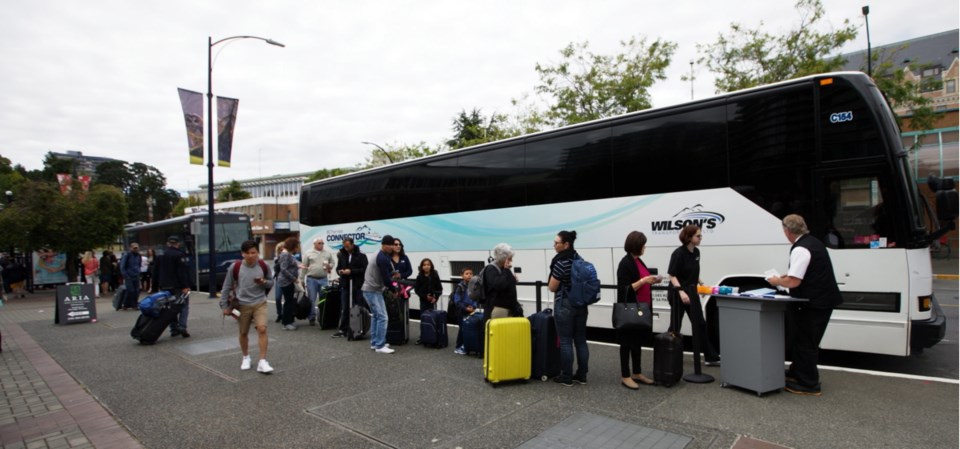Wilson’s Transportation of Victoria is contemplating taking on mainland bus routes as Greyhound prepares to abandon its service in Western Canada.
The company is thinking of runs that would link with its B.C. Ferries Connector service between Victoria and Metro Vancouver, John Wilson, president and chief executive officer, said on Tuesday.
“There’s some more viable routes and most of them consist of larger communities such as Whistler, Kelowna and Kamloops.”
Greyhound Canada announced this week that it is ending service as of Oct. 31 in B.C., Alberta, Saskatchewan and Manitoba.
It had earlier pulled out of passenger service on Vancouver Island and said it was losing money on rural routes in B.C. Greyhound’s U.S. operation will continue to offer service between Vancouver and Seattle.
“We’ll be looking at largely B.C. but we will look at perhaps Alberta opportunities as well. It’s early days,” Wilson said. “I’ve asked our team to start looking at everything and they will be reporting back to me in the coming days.”
Any service must be approved by B.C.’s Passenger Transportation Branch.
“It’s important to us for our ridership to have connectivity to other areas of not only B.C., but Canada,” Wilson said.
He is hoping to meet with B.C.’s Ministry of Transportation in coming weeks.
Transportation Minister Claire Trevena said: “I’m going to be talking to my colleagues from across the country because this isn’t just a B.C. problem. It is a Western Canadian problem.” She will also be speaking with private bus companies and B.C. Transit.
When Greyhound departed in parts of northern B.C., the province filled in with a publicly funded bus service pilot project, and Trevena said she isn’t ruling out Crown-backed bus service.
The federal government has a role to play, but has not been involved in discussions so far, she said.
“There is nothing off the table at the moment,” she said. “My priority is to make sure that the people of B.C. can travel safely and affordably around this province.”
Founded in 1962, Wilson’s owns 163 buses and has 225 employees. It has Grey Line Sightseeing in Victoria, offers charters, runs the YYJ Airport Shuttle as well as the Ferries Connector, and operates the downtown Capital City Station on Douglas Street. The company has offices in Victoria, Nanaimo, Campbell River and Vancouver.
Service expansion requires buses and that translates into significant capital investment. A new highway coach costs $600,000, Wilson said. Electric buses cost about $1 million and would not work on long routes because the infrastructure needed is not in place.
Greyhound has said it will sell some of its fleet, Wilson said, but he expects that its best buses will go to that company’s operations elsewhere.
The bus industry is made of sectors including scheduled passenger service, freight, school buses, sightseeing, charters and transportation for workers heading to and from work in remote areas.
“A lot of the bigger companies have grown and bought out some of the smaller companies. So there’s not as much competition in the marketplace as there was 10 years ago,” Wilson said.
Dylan Green, president of Tofino Bus the Island Bus Company, said he is not planning to expand routes beyond Vancouver Island.
He is disappointed with Greyhound’s announcement, saying riders on Tofino buses have come from as far away as Nova Scotia, Quebec and Ontario.
Green is especially eager to see freight service continue without disruption, saying it plays an important role in bus companies’ revenue.
“We are hopeful that new operators will come forward,” he said.
Green’s company serves Tofino and Ucluelet, and in 2015, expanded to provide service between Victoria and Port Hardy. This spring, the company added stops between Victoria and Nanaimo. It has a shuttle service out of Horseshoe Bay to Vancouver’s downtown and to the bus depot. Tofino Bus has 30 buses, of which seven are school buses.
—with a file from Canadian Press



